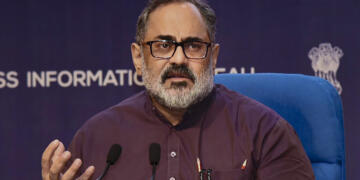In my previous article, I briefly discussed two internet movements which propelled Narendra Modi and Donald Trump to victory in their respective countries by relentlessly countering the media propaganda and even creating a narrative on certain occasions. The Internet Hindus, as labelled by Sagarika Ghose and later adopted by the members themselves, and the Alt-right movement surely have a lot in common but there are certain points on which they differ considerably from each other.
However, both these movements mark the rise of the Right in the two countries and an attempt to reclaim the intellectual space that the Right had largely conceded to the Left over the course of the past few decades. Unlike the Internet Hindus, the Alt-right is a blanket term used to denote several movements and has quite different ideologies in the mix. They have Neoreactionaries (NRx), Libertarians, Traditionalists, White Nationalists, Gamergate, the memers at 4chan, who owe little allegiance to any particular ideology apart from absolute disdain towards the culture of political correctness, and they even have Nazis and White Supremacists on the extreme fringes.
The greatest difference between the Internet Hindus and the Alt-right movement apart from their religion is that members of the former adhere to Classical Liberalism while those of the latter are reactionaries.
The Internet Hindus have firm faith in the virtues of democracy while Alt-right intellectuals reject democracy for authoritarian forms of government and greatly favor Monarchy.
Then it follows that while Internet Hindus have firm faith in the values enshrined in their constitution, large sections of Alt-right core advocate the necessity of the abolition of the democratic Constitution of the government to make the transition into an authoritarian form of government. Thus, in the political spectrum, Alt-righters are much further to the right than Internet Hindus could ever dream of being.
The common ground between the two movements is their recognition of the relentless assault on their traditions and culture by the Left and severe disillusionment with Secularism. Both these movements exhibit an intense desire to preserve their identity, the White culture for Alt-righters and the Hindu culture for Internet Hindus, which they perceive to be under threat from all arms of the Secular state. The two movements capture a deep sense of disillusionment with the current state of affairs and only differ in the measures proposed to fix the current crisis.
In terms of social issues, the difference between the two movements stand in stark contrast. While the Internet Hindus, being Classical liberals, are more than considerate of modernity and Feminism and LGBT rights, the intellectual branch of the Alt-right have very pessimistic opinions about these issues to put it mildly. The intellectuals of the Alt-right (apart from NRx) staunchly favor Patriarchy, consider homosexuality and feminism as symptoms of degeneracy and advocate a return to the dominance of traditional gender roles between the two sexes. However, it should be kept in mind that Alt-right intellectuals do not propose a death sentence for homosexuals, they only have issues with a culture that celebrates homosexuality. In addition, Alt-right intellectuals also harbor the notion, and with good reason, that western males are being emasculated by a highly feminized society which has had severe adverse effects on social cohesion. Thus, while Internet Hindus only condemn the extreme versions of feminism and LGBT movement, the Alt-right considers the entirety of it as symptoms of degeneracy.
An area where the Internet Hindus share much in common with the Alt-right but also display gigantic differences is their reaction towards political correctness. While Internet Hindus are more than courteous in their critic of the culture of political correctness, Alt-righters often resort to outrageous antics to undermine it. Also, the fact that one movement is classical liberalism in its nature while the other is reactionary is most highlighted in this regard. The Internet Hindus largely abstain from abusive behavior, offensive and inappropriate humor but for the Alt-righters, they adopt every aspect of 21st century American culture and turn it over on its head. From holocaust jokes to offending people for the heck of it, everything is fair game. Often, their crude sense of humor invites accusations of antisemitism from the rest but although there are some genuine antisemites in their ranks, most of it is just for fun and humor.
Perhaps the greatest difference between the two movements is the manner in which they countered the ceaseless propaganda of the mainstream media. While the Internet Hindus relied mostly on Social media interactions and pages and websites to dispel myths promoted by the media, the Alt-right apart from these relied extensively on memes and outrageous antics to build and destroy and shape narratives. The Alt-right has an entire meme brigade which comprises mostly of people who bear extensive hatred towards the PC culture. It’s a joke in Alt-right circles, “We literally memed a guy into the Presidency!” Things got so out of hand, liberals actually labeled one of their favorite memes, Pepe-The Frog, as a hate symbol.
Any comparison of the two movements makes it imperative to place them in the current political spectrum of their respective countries. The political and social views of Internet Hindus are by no means radically different from the dominant urban Hindu culture of India and their views align closely, if not totally, with the major political party they support. However, the same cannot be said for the Alt-right. In the United States, the center has shifted so far towards the left that the Alt-righters in response have moved further right from mainstream conservatives by several degrees.
The Republican party in no way whatsoever represent the outlook of the Alt-righters. The reason why Alt-righters are so excited about Donald Trump even though he is not Alt-right is because of their perception of him as an Alpha Male and his campaign promise of deporting illegal immigrants and obviously, his demolition of political correctness. Internet Hindus were more than courteous of the Margdarshak Mandal of the BJP who had harbored some grudge against Narendra Modi’s Prime Ministerial candidacy even though they disagreed with them.
However, the Alt-righters bear nothing short of absolute disdain for the GOP establishment which had tried to prevent the Donald Trump’s nomination and even tried to undermine his Presidential campaign and reserved the choicest abuses for them. They coined a specific term to describe the GOP establishment opposing Donald Trump, ‘Cuck’, an abuse which has become extremely popular in the past one year.
Thus, we can see that although the two movements served similar purposes for their favored candidates, the similarities between them are mostly superficial. Also, the Internet Hindus coordinated mainly on popular social networking sites such as Facebook and Twitter while Alt-righters developed their movement in obscure regions of 4chan and Reddit and the blogosphere before hitting the button on Twitter and Facebook.
There is a fledgling movement, however, which is fast gaining momentum that resembles the Alt-right far more than the Internet Hindus: the Nava Hindutva. Members of Nava Hindutva are reactionaries, adopt similar tactics as the Alt-righters to spread their memeplex, consider feminism and celebration of homosexuality as degeneracy and advocate a return to traditional gender roles.
They perceive modern Secularism and atheism as mutations of militant Protestantism and often engage in outrageous antics to gather more attention. Like the Alt-right, the Nava Hindutva has its intellectuals, meme brigade and the ‘shitlords’ but is definitely bereft of antisemites. Disillusionment with modernity and the dawning unsustainable nature of liberalism has left a gaping hole which has resulted in various ideologies competing for it. In a multicultural world, identity is everything and with the Rightwing on the Rise, it will be certainly interesting to witness how these movements develop with liberalism and secularism increasingly on the retreat.

































